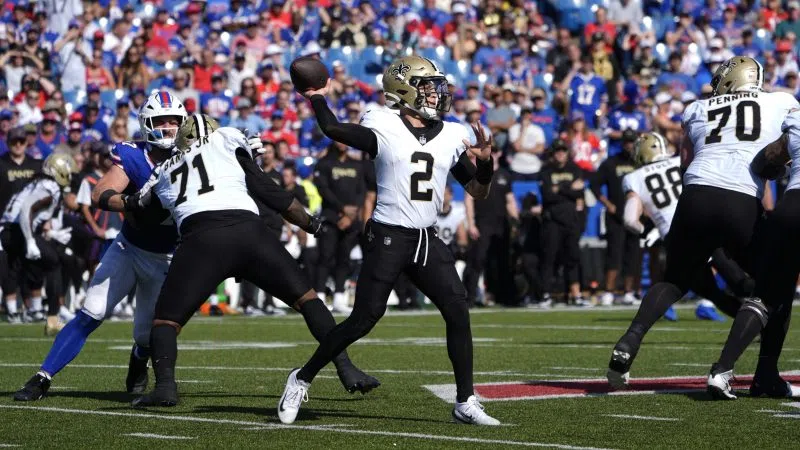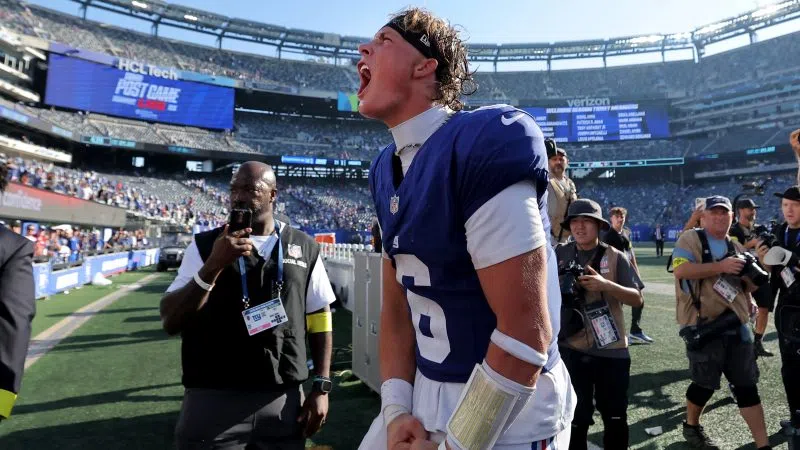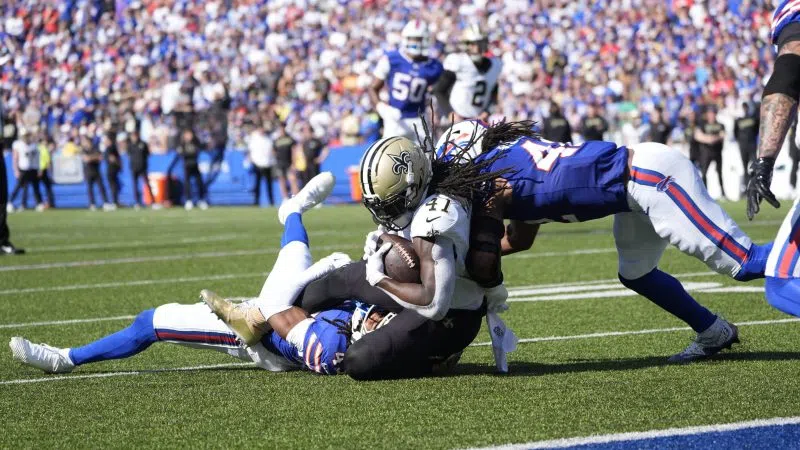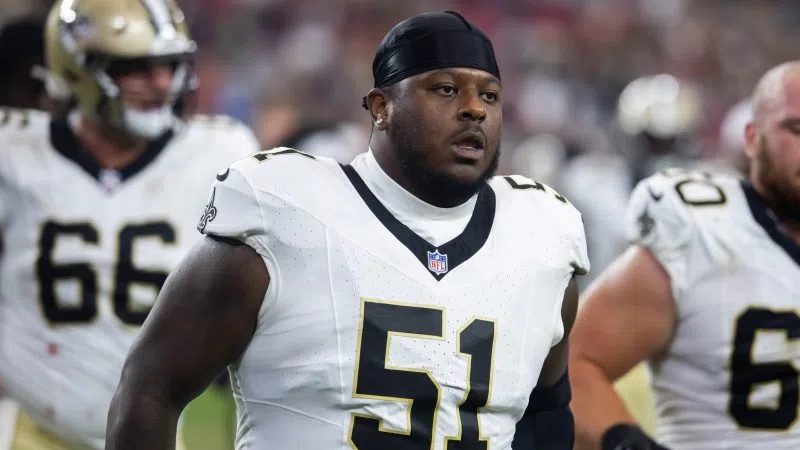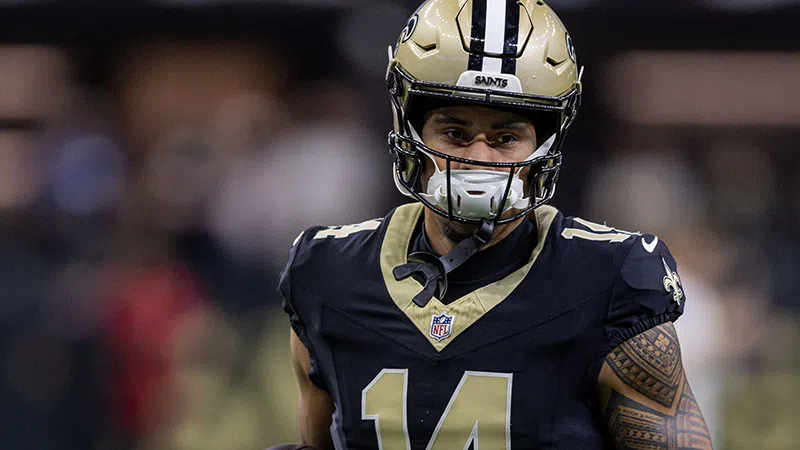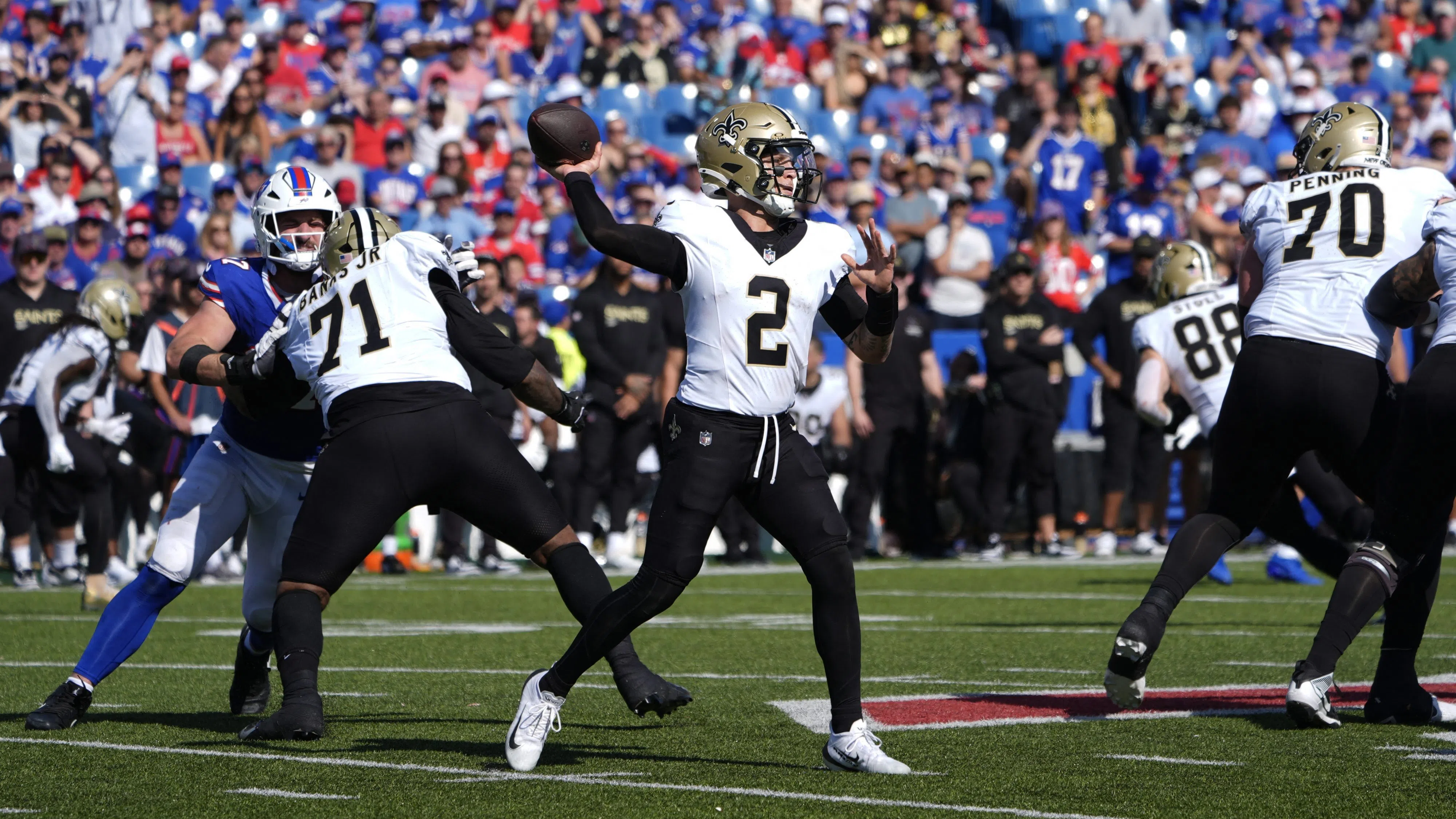
Gregory Fisher-Imagn Images
By Ross Jackson
ORCHARD PARK, N.Y. – In a game that they were expected to lose, the New Orleans Saints did not disappoint. Not because they indeed did lose to the Buffalo Bills by a score of 31-19 but instead because the team desperately needed to prove that, even in a loss, it could be competitive against one of the league’s best teams.
After a 44-13 routing in Seattle last week, the Saints needed a bounce back game and they needed it badly. That rebound would be defined not with a victory on the scoreboard but instead with one in multiple factors of the game. Though even with those smaller wins, the team also uncovered some of its key limitations that will likely have to wait until the offseason to address.
Positive: Finding An Identity
The Saints weren’t the better team as a whole on the field Sunday, but they were the better rushing attack. The team’s 189 rushing yards was its best performance since Week 11 last year when it piled on 214 rushing yards against the Cleveland Browns. Not only did the rushing attack help the Saints produce against Buffalo, they actively struggled when going away from it.
Of the 189 rushing yards, 135 came from a combination of running backs Alvin Kamara and Kendre Miller. Kamara averaged 4.7 yards per carry while Miller averaged 5.9, the second-best mark of his career thus far.
Quarterback Spencer Rattler had only one pass attempt with 20 or more air yards and often turned to scrambling for a big pickup rather than taking shots downfield. At the very least, Rattler has been able to take advantage of the talent he has as a scrambler. Connecting a few more downfield passes here and there would help the team take its offense to new heights
But if nothing else, much like the Philadelphia Eagles last year, the Saints appear primed to run their offense (literally) through its ground attack. Just without the Super Bowl expectations, of course.
Negative: Defensive Scheme Doesn’t Have The Personnel
A 3-4 defense is a great answer to many elements of modern day offenses. However, the lack of a hybrid pass rusher-linebacker that can drop into coverage will continue to plague the Saints throughout the remainder of the season. Defensive end Carl Granderson was on the wrong side of the equation on a deep ball from Bills quarterback Josh Allen to tight end Dalton Kincaid and it’s hardly Granderson’s fault.
Get in there, @_DaltonKincaid !#NOvsBUF on @paramountplus pic.twitter.com/jwpxll5ES7
— Buffalo Bills (@BuffaloBills) September 28, 2025
The defensive end is a pure edge defender, not a coverage linebacker. Until the Saints find a hybrid type that can pair with someone like Granderson or even veteran defensive ends Cameron Jordan and Chase Young, this will continue to be a sore spot. But nothing meaningful can likely be done about that until the offseason. These are the kinds of growing pains that were expected and are now being proven.
Positive: Young Building Blocks Are Making An Impact
Rookie defensive backs Jonas Sanker and Quincy Riley were two of the best players on the field for New Orleans.
Sanker reeled in the team’s first interception of the season (and the first of his young career) by racing downfield to track a pass from Allen that the Bills’ passer definitely did not think the safety could get underneath. He also had several pass breakups fighting for positioning and getting his hand up to make the deflection.
Riley was credited with only one catch allowed for 11 receiving yards by Pro Football Focus during the game. He entered the game early and held down the outside cornerback spot opposite Kool-Aid McKinstry for the remainder of the game. Showing an understanding of the roster and where talent has struggled to start the season.
Positive: Penalties Appear To Clean Up
After averaging more than 10 accepted penalties per game over the first three weeks, the Saints only posted four against the Bills. Three were on special teams.
- Holding during a return
- Intentional Grounding as Rattler tried to avoid a sack
- Kickoff Short of Landing Zone
- Running the Kicker
Overall, it’s a bit of an upgrade from what we’ve seen out of New Orleans up to this point. One way the team achieved this was leaning on its player leadership throughout the week. Per starting right tackle Taliese Fuaga, the team captains were tasked by head coach Kellen Moore to find additional leaders across the roster at numerous position groups and on special teams to help ensure accountability. The leadership group has been in place since the beginning of the season and includes about 12 players who are trusted to be player-to-player enforcers and champions of the team’s standard.
Negative: When Penalties Are Committed, They’re Costly
The roughing the punter was the most costly of the game. Instead of the Saints getting possession down nine points with more than five minutes remaining, the penalty gave the Bills a chance to extend its lead to 12 by the end of the drive. While the Saints have improved penalty habits for the week, committing them at pivotal times is still an issue.
Positive: Saints Shows They Can Adjust
The Saints were no. 4 in the NFL in total shotgun snaps going into Sunday’s game but ran a lot of their offense from under center against the Bills. This change was made to help the team communicate in a hostile environment, but also provided some good situations for the run game.
“Going into this game plan [we] felt like it presented itself [a] good opportunity,” Moore said of the logic behind the increase of such snaps. “[A] combination of the opponent and ourselves being able to use your cadence a little bit more on the road.I think there was some value to that.”
This had a positive impact in the run game with offensive linemen able to keep their focus ahead of them before engaging with defenders rather than having to watch the center peripherally. It also made it much easier to hear Rattler’s communication at the line of scrimmage.
Some additional adjustments included what appeared to be a heavier man coverage plan on defense, the inclusion of defensive tackle Khristian Boyd as an additional run stuffer in the middle of the trenches and a greater usage of three-safety sets.
While the Saints didn’t beat the Bills, they beat the expectations. They did so by showing some growth, some changes and some competitive force against one of the NFL’s best. In the meanwhile, New Orleans also uncovered some of its biggest areas of need and perhaps the “why” behind them. The Saints needed to learn something about themselves while in Orchard Park, N.Y. and from the initial looks of it, they may have done exactly that.



